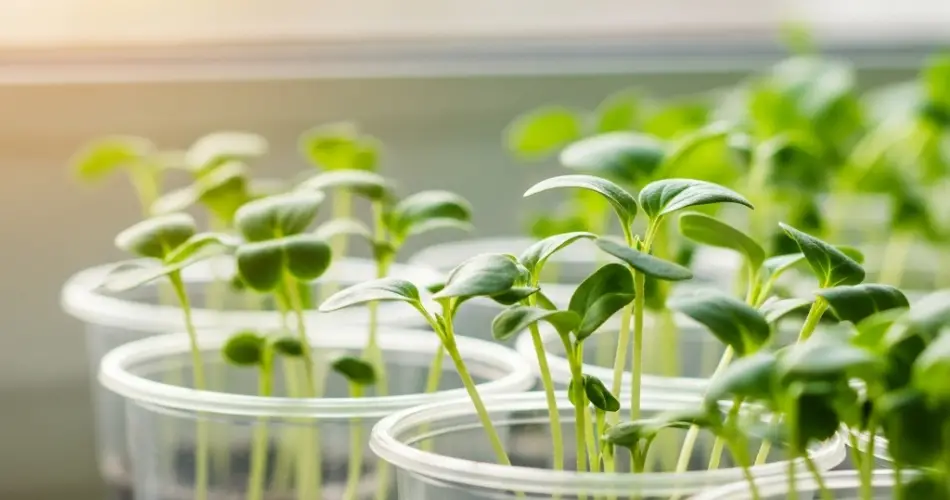Successful plant propagation depends heavily on how well cuttings develop roots. While there are many commercial rooting hormones available on the market, nature offers some powerful alternatives that are often overlooked. One such solution is an incredibly effective, all-natural rooting hormone that few gardeners know about — but it’s easy to prepare at home and works wonders on everything from ornamental plants to vegetables, trees, and succulents.
This article will walk you through how to create this powerful rooting solution using simple, natural ingredients that promote fast, healthy root development in almost any type of cutting.
Why Use a Natural Rooting Hormone?
Plant cuttings often struggle to develop roots because they lack the internal hormones that trigger root growth. Synthetic rooting powders and gels are widely used, but many gardeners prefer natural alternatives that are safer for the environment, non-toxic, and often just as effective.
Natural rooting hormones stimulate the production of auxins — plant hormones responsible for root initiation. These substances can be found in everyday kitchen ingredients and certain common plants.
The Secret Ingredient: Lentils or Chickpeas
Few people realize that lentils, chickpeas, and other legumes are naturally rich in auxins. When soaked and sprouted, these seeds release powerful growth-promoting compounds that encourage root development.
Lentil-based rooting water is particularly effective and versatile. Here’s how to make it:
How to Make Homemade Rooting Hormone from Lentils
Ingredients:
-
1 cup of dry lentils (or chickpeas)
-
3–4 cups of water
-
Blender or food processor
-
Fine strainer or cheesecloth
-
Container or jar
Steps:
-
Soak the Lentils: Place the lentils in a bowl and cover them with water. Let them soak for 12 hours or overnight.
-
Sprout the Lentils: After soaking, drain and rinse the lentils. Leave them in a jar or colander at room temperature, rinsing twice daily until they begin to sprout (usually within 1–2 days).
-
Blend and Extract: Once sprouted, blend the lentils with fresh water (about 3 cups). Strain the mixture through cheesecloth or a fine sieve to separate the liquid.
-
Store the Rooting Solution: Pour the liquid into a jar and store it in the refrigerator for up to 5 days. Shake well before each use.
How to Use the Rooting Hormone
You can use the homemade rooting hormone in several ways:
1. Soaking the Cuttings
-
Dip the base of the plant cutting into the solution and let it sit for 2–4 hours.
-
Then plant the cutting in moist soil or potting mix.
-
Water with the remaining rooting solution for extra benefit.
2. Watering Newly Planted Cuttings
-
Water the base of freshly planted cuttings with the solution every other day for the first week to encourage strong root growth.
3. Hydrating Seeds Before Planting
-
Soak hard seeds (like peas or beans) in the solution for a few hours before planting to speed up germination.
Which Plants Benefit from This Method?
This homemade rooting hormone works well for a wide range of plants, including:
-
Ornamental plants (roses, hydrangeas, coleus)
-
Herbs (basil, mint, oregano)
-
Vegetables (tomatoes, peppers, cucumbers)
-
Houseplants (pothos, monstera, philodendron)
-
Citrus trees and woody shrubs
It’s particularly effective for softwood and semi-hardwood cuttings, but even harder wood types can benefit with longer soaking times.
Boosting the Effect: Add a Touch of Honey or Aloe Vera
For even greater results, consider adding a teaspoon of raw honey or aloe vera gel to the solution. Both have antimicrobial properties that protect the cutting from rot while also contributing to root stimulation.
-
Honey acts as a natural preservative and antibacterial agent.
-
Aloe vera contains plant hormones like gibberellins and salicylic acid that support cell regeneration and root development.
Simply mix these into the strained liquid before applying it to your cuttings.
Tips for Best Results
-
Always use healthy, disease-free cuttings.
-
Make sure your tools (scissors, knives) are sterile.
-
Keep cuttings in a warm, humid environment.
-
Avoid direct sunlight during the first few days.
-
Don’t overwater — keep the soil moist but not soggy.
Final Thoughts
This little-known rooting hormone made from lentils or chickpeas is one of the most underrated yet powerful tools in natural gardening. It’s affordable, eco-friendly, and packed with the same plant hormones used in commercial products — without any synthetic chemicals.
If you’re looking for a sustainable way to propagate your plants successfully, try this method and watch your cuttings develop healthy, vigorous root systems in no time.



